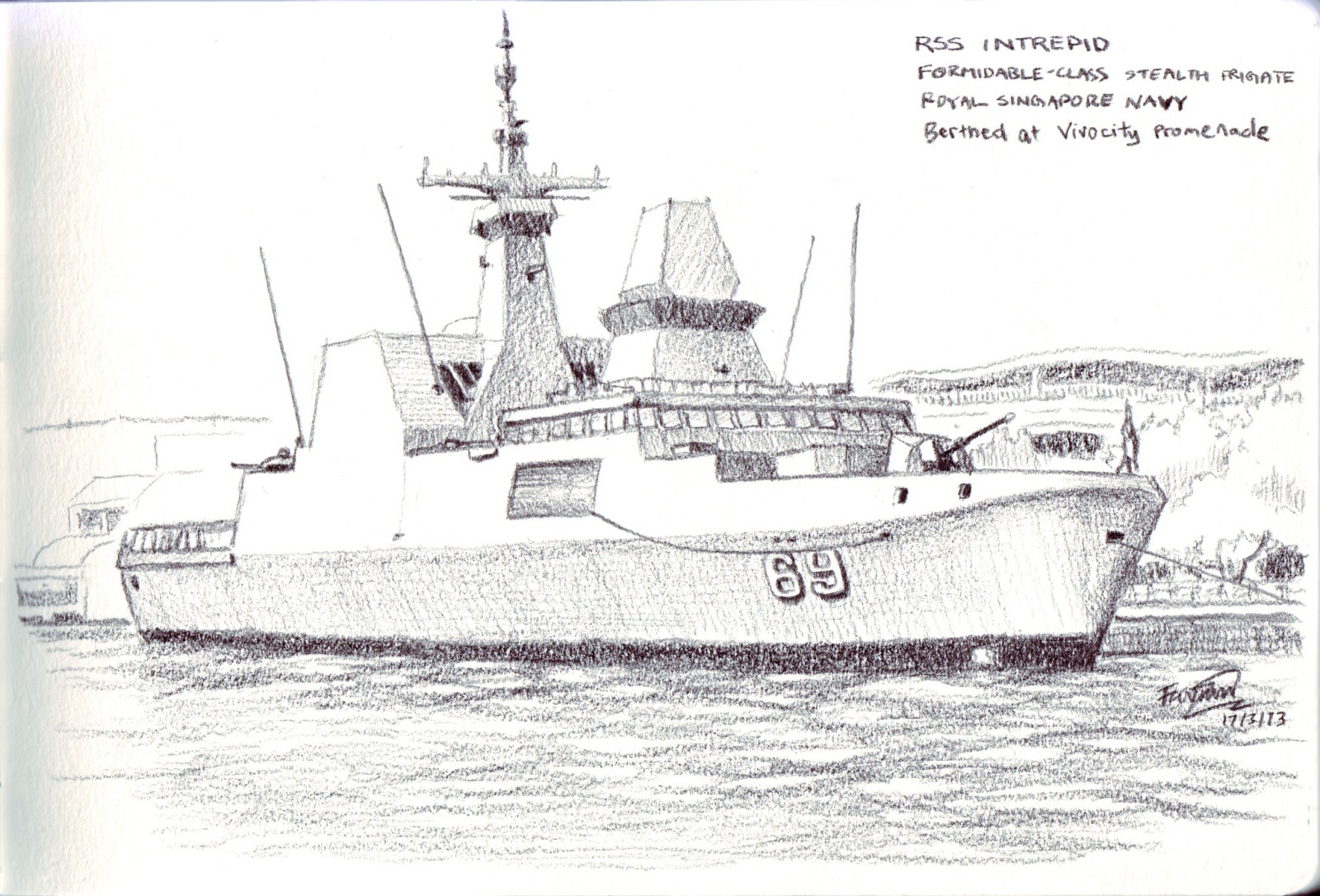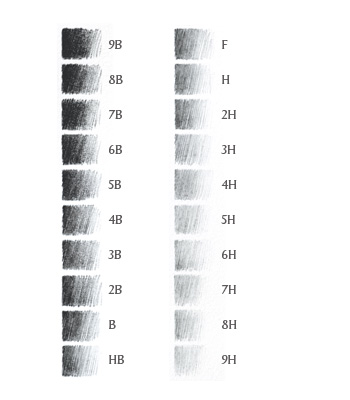P E N C I L
Do not be fooled. This is not a child's toy. in the hands of a skilled artist, a pencil can produce an image as good as a photograph.
For Starters
As in the last post, I think it would be helpful to start out by suggesting a pencil that a beginner sketchpacker can easily get. Thankfully, good drawing pencils are easily obtainable, and there's a lot less to think about than, say, paper. Faber Castell and Staedtler produce a whole range of pencils with different shapes, lead hardness and lead size. But if you want a multi-purpose pencil to start off with, a 2B pencil would be a good balance of hardness and darkness (more of that later).
 |
| Commonly found pencils to start off with |
H's, B's and Everything Else
Now you might be wondering what's with those B's and H's and stuff. Those letters indicate the grade of the lead in terms of darkness. "H" refers to "hardness" and "B" refers to "blackness". For leads other than H or B, you might find a number in front of the letter (such as 2B). The higher that number, the greater the hardness of blackness. 10H, therefore, would be a very hard lead and not so dark. 9B would be a very soft and black lead. Hard leads wear down slower and are more suitable for detailed work, while soft leads are darker, but wear down quickly and are more suited for broad strokes.
Pencil leads are a mixture of clay and graphite. Generally speaking, more clay and less graphite would result in a harder lead. But it should be noted that not all manufacturers follow the same recipe. I have found that Lyra's ArtDesign 669 2B is actually relatively harder (and lighter) than Faber Castell's Goldfaber 1221 2B. The best way to find out the differences is to experiment!
Not all pencils follow this grading system. Pencils like the Blackwing and Ebony pencils (in the photo above) don't have these numbers and letters on them. Ebony pencils, for example, are very soft and black and smooth with thick lead cores. Several manufacturers such as Sanford and Prismacolor make Ebony pencils. These pencils are not for fine detail work, but are great for laying tones in broad strokes.
 |
| Jurong Bird Park waterfall drawn with Ebony pencil |
The Blackwing of today is also a very black and smooth pencil. Its history is quite interesting and it was a very well-known and famous pencil that was the tool of choice of famous animators like Chuck Jones. Today's version is a reproduction of the original using the a similar recipe. More on the Blackwing in the following links:
- Wiki: http://en.wikipedia.org/wiki/Blackwing_602
- Research and background: http://blackwingpages.com
- http://www.pencilpages.com/articles/blackwing.htm
- http://www.penciltalk.org/2009/07/blackwing-602-pencil
- Today's Blackwing by Palomino: http://palominobrands.com/blackwing/
Anyway, I get ahead of myself.
If you're bringing wooden pencils around, be sure to bring a sharpener. You can do without an eraser, but unless you're planning to shave the pencil down with a penknife (which can be useful for stylistic purposes), you'll need to sharpen it when the lead has gone into the wood.
Clutch Pencils or Lead Holders
If you have a little more cash to spare, you might want to invest in a lead holder.
 |
| Rotring lead holder with lead |
Many varieties exist for different lead types and sizes. The most common ones are those that use 2mm lead (similar to the lead cores found in most 2B pencils). Unlike mechanical pencils where you press the rear to advance the lead, pressing the button at the back of a lead holder opens up the clutch at the front so you can move the lead to the desired position/length.
 |
| Clutch pencil showing clutch head |
Because you're using a length of graphite lead, you don't really need to sharpen it. However if you still wish to do so, you can get a sharpener for the size of lead you are using. Some lead holders have basic sharpeners in the rear button.
 |
| Rear sharpener. This one can be removed so the lead can be fed from the back |
One of the conveniences of using a lead holder besides not having to sharpen the lead is that you can use different grades of lead in one holder. They tend to be a little heavier than wooden pencils, though, since they're made of metal and plastic.
This is just an intro to pencils. There are many other graphite products out there such as graphite sticks (think: pencils without wood), water-soluble graphite, even graphite powder. Each has its own properties and use.
The pencil, though simple and seemingly primitive, is surprisingly versatile. It can afford you worlds of line variation and tonal values if you learn to wield it well. Below are some of my pencil sketches, but they are only a tiny sample of what you can achieve with this wonderful tool:
 |
| Copyright © Favian Ee 2013 |
 |
| Copyright © Favian Ee 2013 |
 |
| Copyright © Favian Ee 2013 |
 |
| Copyright © Favian Ee 2013 |
 |
| Copyright © Favian Ee 2013 |
 |
| Copyright © Favian Ee 2013 |
 |
| Copyright © Favian Ee 2013 |
 |
| Copyright © Favian Ee 2013 |
 |
| Copyright © Favian Ee 2013 |
I won't go into details about how to use the pencil in this post, but here are some books you might find helpful on pencil sketching:
Happy Sketching!!



Very informative and nice sketches too
ReplyDeleteThanks for the kind words, Francis :)
Delete